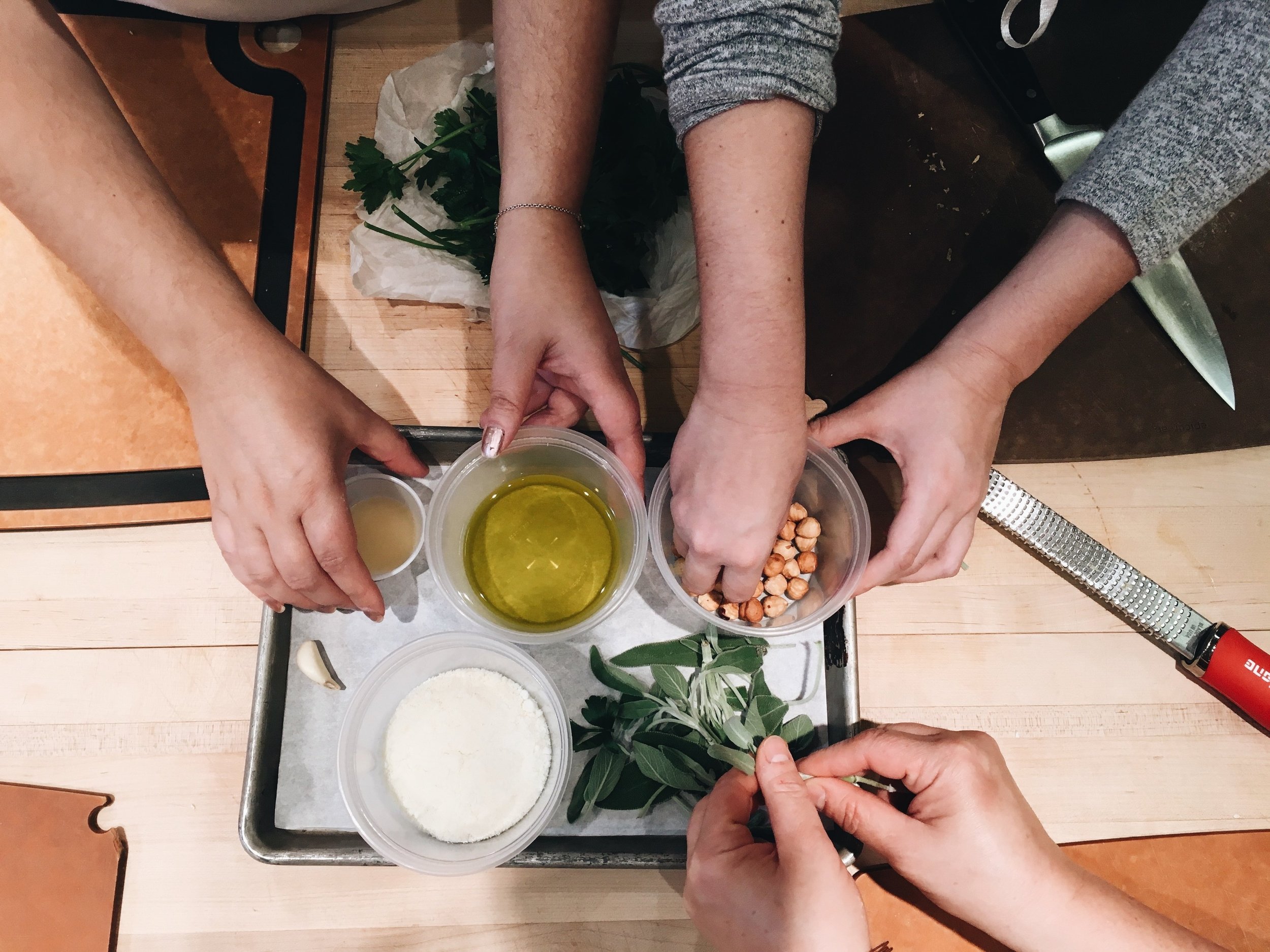My mom and I along the years have acquired a lot of pasta equipment, from attachments for our Cuisinart, ravioli molds, to manual pasta machines, so it was about time we learned how to make fresh pasta!
So, two years ago, my mom and I ventured into the unknown and took a pasta making class at Sur La Table in NYC.
Homemade pasta is something that you usually watch chefs make on TV or eat it at an Italian restaurant. It's one of those dishes that home cooks, I think, stray away from, because of how much work and skill we think it requires making.
Reading the recipe on its own may seem overwhelming, but going through step by step with an instructor explaining why and how this works, really took my worries away.
The best thing I’ve learned is to BE PATIENT! Read the recipe, reread it, prep and go through each step with calm and confidence.
During the class, we both were shocked on how simple and easy it really was to make fresh pasta and were so excited to finally put all our tools into good use!
We have made this pasta recipe for many occasions since then, and every time it came out with great success!
Soon I will be posting a few more daring pasta recipes, maybe even a few colored ones!
Ingredients
2½ cups (12½ ounces) "00" flour, plus more for dusting
1 teaspoon kosher salt
4 large eggs
1 tablespoon extra-virgin olive oil
Recipe
Fresh pasta dough is so easy to make, you’ll wonder why you never did before. If you can find Italian "00" flour, use it to make very delicate, yet chewy pasta. If not, bread flour works really well.
To make dough: Place flour and salt in a large mixing bowl and whisk to combine. Make a "well" in the center of the flour mixture and add eggs and oil. Using your fingers, blend the eggs into the flour mixture, stirring the flour in from the sides of the well and working outwards. When the pasta dough is thoroughly mixed, turn it out on a lightly floured work surface. Knead dough until it is smooth and flexible but not sticky, adding small amounts of flour as needed; about 5 minutes. Shape the dough into a ball and flatten into a disk. Cover with plastic wrap and allow to rest for at least 20 minutes or up to an hour at room temperature.
To roll dough: Secure a pasta machine to the edge of a long countertop. Using a bench scraper, cut the dough into three pieces. Keep extra dough covered in plastic wrap while working with one piece. With a rolling pin, roll the piece of dough into a rough rectangle so that it will fit inside the widest setting of the pasta machine. Roll the dough through the machine, catching it with one hand as you roll with the other. Take the dough and trifold it like a letter. Turn the dough so one open end faces the machine and roll it through on the widest setting again. Fold, turn, and roll once more on the widest setting.
Continue rolling the pasta through the machine without folding, adjusting the rollers to a smaller setting each time, until the desired thickness is reached. If the pasta sheet becomes too large to handle, use a bench scraper to cut it into more manageable lengths and continue rolling.
Cut sheets to desired shapes and sizes, toss with semolina flour and set aside covered with a clean kitchen towel. The pasta can be cooked immediately or covered with plastic wrap and refrigerated for up to 24 hours before use.
To cook pasta: Heat a large pot of water over high heat until boiling. Generously season water with salt. Add pasta and stir immediately to prevent the strands from sticking together. Boil until al dente, 2 to 3 minutes. Reserve about a cup of pasta water and drain pasta through a colander. Toss hot pasta with your sauce of choice, using reserved pasta water to thin the mixture and coat the pasta as needed. Garnish as desired and serve immediately.
Recipe taken from Sur La Table’s Cooking Classes





